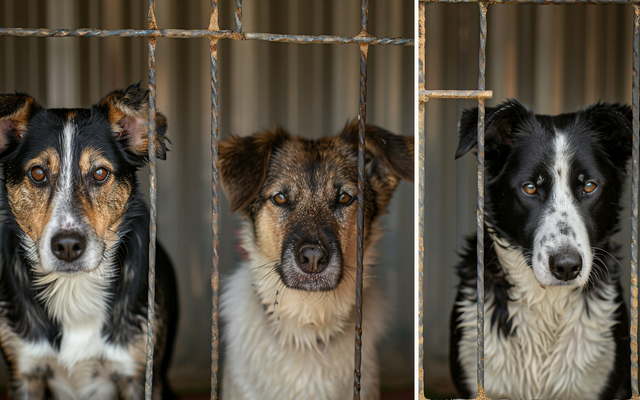How many dogs are in the world? The number of dogs in the world is potentially greater than the entire human population of the United States. That’s a lot of wagging! Unlike those, getting an exact worldwide headcount of our hairy friends is not easy but one thing for sure- dogs are everywhere. So why do we cherish having these four-legged pals around us? And what can an understanding of dog demography tell us about life on earth? Let’s dig into some intriguing aspects of dog demographics!
Defining Our Terms: Not All Dogs Are Created Equal
When we talk about the huge numbers, it is important to note that not all dogs fall under ‘pets.’ These distinctions are crucial because they underline responsible pet ownership and the hurdles faced by animal welfare organizations globally. Different Types:
- Pet Dogs: These are the canine buddies who occupy our houses and our hearts. They’re those which we usually pamper with soft beds, play things or may be some steak from the dinner table(woops!). Such animals completely depend on their owners.
- Strays: Life is not always as simple as belly rubs and squeaky toys; strays are former pets or offspring left to fend for themselves. They might go through garbage cans searching for food, face traffic dangers and other animals’ threats, and often lead short and tough lives.
- Free-Ranging Dogs: This expansive category includes non-pet dogs which don’t live in one household such as the conventional pet. Village dogs in many places in the globe may pick remains from community members but have freedom to move around. Conversely feral dogs are purely wild without any sort of sociability related to them – offsprings after parents’ generations that have never been touched by people.
- Service Dogs: a dog that has undergone specialized training to perform tasks for individuals with disabilities. It transcends mere good behavior – these dogs acquire remarkable abilities! (see more information about Service Dogs)

The Global Picture: A Whole Lotta Pups
Now let’s see some numbers! How many dogs are we talking about? Well, the best estimates put the global dog population somewhere between 700 million and one billion. That is an enormous amount of range but counting every wagging tail around the globe is like trying to herd a thousand puppies – chaotic yet adorable.
So, where are all these dogs concentrated? Let’s have a look at their regional breakdown:
- Asia: Over half of the world’s total dog population lives here alone; China has it in droves.
- Africa: Dog keeping is getting popular in several nations like Nigeria or South Africa for instance.
- Europe: While pet ownership rates remain high, stray populations are often limited by strict national laws.
- North America: We really love our pets indeed! The US counts among countries with highest pet dogs’ numbers across the globe.
- Latin America: Stray and feral dogs are a huge problem in this continent indicating that population control and education must take place there.

How Do They Know? The Art of Counting Canines
The manner in which these estimates are arrived at might be a puzzle to many people. It is definitely not the case that there are dog lovers wandering around with clickers! So here is what happens behind the scenes:
- Pet Registrations: In countries where pet registration and microchipping are required, finding data on owned dogs can be easier.
- Surveys and Studies: Usually this includes certain regions or cities whereby researchers may use door-to-door surveys or even analyze veterinary records to extrapolate larger population trends.
- Observation: With numerous dogs that roam freely in some areas, pundits may undertake visual counts or use capture-recapture methods for estimation.
- Mathematical Models: This is where it gets fancy! Scientists employ complicated models accounting for dog fertility rates, average lifespans and even local economic conditions.
America’s Love of Dogs
Americans have always loved keeping dogs as pets. According to the most recent information released by the American Pet Products Association (APPA), 70% of American households own a pet! But how has this love for dogs changed over time?
- A Historical Howl-Out: In the 1970s, only about half of US households had a dog. Since then however, pet ownership has gone up gradually reflecting changing lifestyles and attitudes towards animals as members of families.
- State-by-State Fluff Factor: Wondering which places are big on owning dogs? The top states include Idaho, Wyoming and Arkansas while urban ones with smaller living spaces tend to have slightly lower percentages of dog owning families.
If you mention specific statistics about dog ownership trends in the US, link to the relevant data from the American Pet Products Association (APPA) website.
What’s Driving the Love for Pups?
There are many reasons why Americans embrace dogs:
- Companionship: These creatures make great friends who love us unconditionally reducing loneliness. Science even says time with our dogs can be seriously good for our mental health!
- Stress Relief: Have you ever had a long day and felt like snuggling with your dog afterwards? It is not just in your head, studies show that our pets can actually lower blood pressure and anxiety.
- Motivation for Exercise: Need a reason to get off the couch? Dogs make fantastic workout buddies, encouraging walks and outdoor adventures.
- Economic Impact: It is about more than just feeling warm and fuzzy! The pet industry is massive in the country, supporting jobs in veterinary care, dog food, toys among others. Americans love to treat their pets!

Top Dogs and Rising Stars
Dog breeds come in fashion trends too; they change over time. Nevertheless, some popular ones always remain so! According to American Kennel Club (AKC), Labrador Retrievers have been among the most popular breeds in America for many years. They are great family dogs due to their friendly personalities, trainability and love for water.
What other breeds get America’s tails wagging? Here’s a snapshot:
- Tried and True Favorites: Germans Shepherds, Golden Retrievers, French Bulldogs and Bulldogs keep being favorites among pup lovers all around.
- Little Pups, Big Personalities: Some canine breeds like the Dachshunds, Beagles and poodles are equally popular in urban areas where the space is limited.
- The Rise of the Doodle: Looking for fluffy fur or a hypoallergenic dog? Get a Goldendoodle or Labradoodle and join the trend.
Though dog population studies may appear to be of lesser importance; in actual fact, they offer insights into our own lives, public health and even the environment. How does it all connect?
- Public Health Superpowers: Disease control programs largely depend on dogs. For example, Vaccination campaigns for dogs are very important against the outbreak of rabies which is a deadly disease in many parts of the world.
- Environmental Footprints: Like us, our pets affect the environment. Responsible pet-ownership includes thinking about such things as sustainable pet-food choices and eco-friendly disposal methods so as to reduce their environmental impact.
- The Bond between Human and Animal: A myriad of ways that dogs contribute to our well-being brings out special relation between humans and animals. It has been shown by various researches that interaction with a dog improves our physical and emotional health state.
- Society’s Looking Glass: The way we treat dogs, including strays can act as an indication of how compassionate we are as well as how responsibly we use the planet’s resources.
The Future of Furry Friends
What could happen to dog populations down the line? Let’s think about it:
- Evolving Regulations: Improving understanding of animal welfare might entail more stringent breeding and ownership laws concerning dogs in order to foster ethical practices.
- Technological Tail Wags: Stray population management and lost pet identification might involve greater application of micro-chipping and GPS technologies or even helping us grasp more about canine behavioral patterns at large.
- Shifting Attitudes: As a result, one would expect continuous recognition of all dogs being worthy respect and care regardless if they live with us or wander streets.

Call to Action
Whether you are proud dog owner or an animal enthusiast, you can make a difference. By adopting, supporting responsible pet care and informing people about street animals’ problems you could help dogs have a brighter future everywhere. Let us join hands and bring forth a world where all dogs have their safe places to stay!
FAQ Answers
How can I help reduce stray dog populations in my community?
- Donate or volunteer with organizations that offer low-cost or free spay/neuter services: Support programs which provide affordable spay/neuter as your contribution.
- Temporary home provider: Open your house to temporarily shelter a rescue or stray dog thereby creating room for others.
- Promote responsible pet ownership: Educate people about the importance of neutering, micro-chipping and not giving up on pets among other things.
- Give an abandoned dog a home instead of buying from breeders: Instead, choose to give shelter or rescue dog a loving home.
What are the differences between stray, feral, and free-ranging dogs?
- Strays: These are once domesticated dogs who are now lost or abandoned by their owners. They may be approached but they lack homes.
- Feral: These are wild-born dogs that have never been socialized with humans. They are typically wary and independent in nature.
- Free-ranging: This word includes village dogs (who scavenge but may have some interaction with a community) as well as fully unsocialized dogs.
Which countries have the highest dog populations?
The largest number of dogs is found in China, India, USA Brazil and Russia consistently rank among the countries with the most significant amount of canine population
Why are dog population estimates often so wide-ranging?
It is extremely hard to count stray and free-ranging dogs. Even though they are not perfect, the survey method, capture-recapture method, and mathematical modeling are some of the methods that can be used. This is also because populations may change quickly because of their breeding cycles.
Is there any association between dog ownership and better mental health?
Yes, it has been demonstrated in many studies that owning a dog can help alleviate stress, anxiety and depression while increasing feelings of community support as well as enhancing physical fitness.
Do certain breeds have greater chances to become strays?
Whichever breed might run away but elements such as bad reproduction practices, lack of spaying/neutering in some regions, and breed specific legislation could increase the probability for few breeds becoming without homes

I’m Ashley Fowler and dogs have always been my companions from my earliest memories. Growing up, our family dog was my confidant, adventure buddy and sometimes partner in crime (sorry mom, about the chewed shoes!). That bond sparked a lifelong passion for learning about dogs – their unique personalities, their histories, and the special ways they fit into our lives. MDogsW is my way of sharing that passion and hopefully helping others experience the joy of finding their perfect puppy. When I’m not researching dog breeds, you can usually find me hiking with my trusty Beagle by my side or curled up with a cozy blanket, a cup of tea, and a stack of dog breed books.


